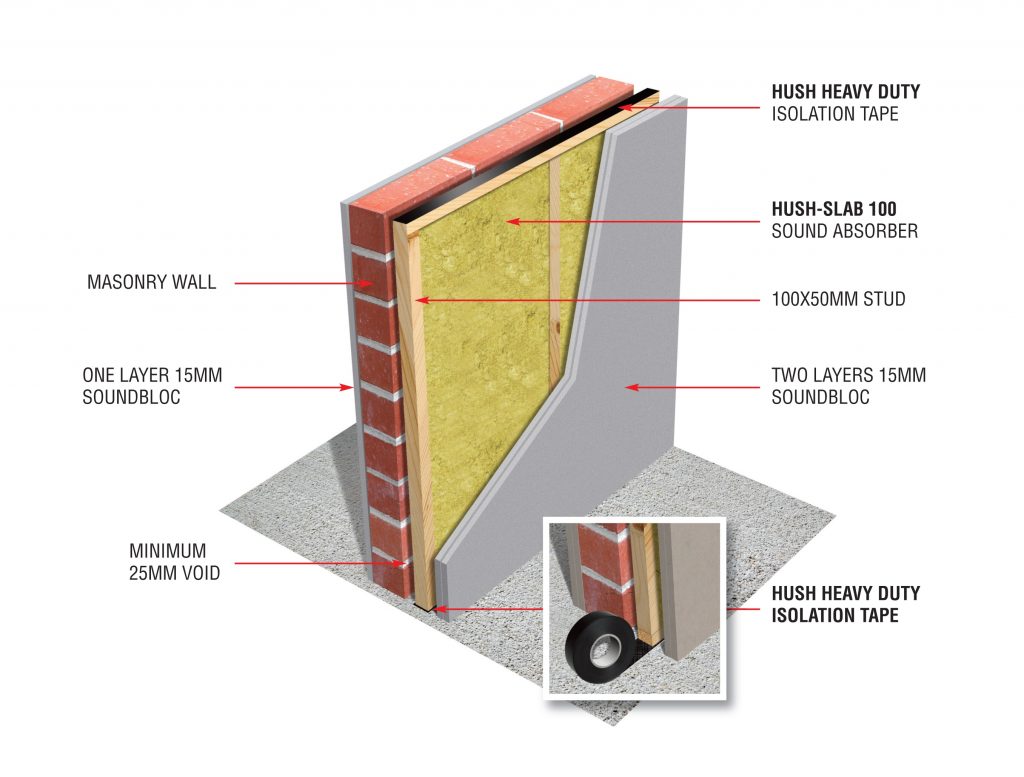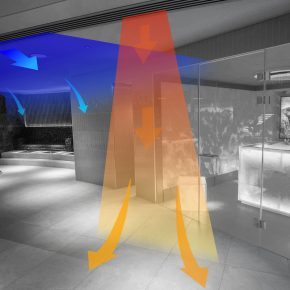
Hush: What are the acoustic design requirements for HMOs?
This article from Hush Acoustics explores exactly what are the acoustic design requirements for Houses in Multiple Occupancy (HMOs)?
It is estimated there are nearly 490,000 Houses in Multiple Occupancy (HMOs) across England alone, with many more in Scotland, Wales and Northern Ireland. And although there may be some ambiguity around what defines an HMO, it is clear that this type of accommodation accounts for a significant part of the UK’s housing stock.
An HMO, in general terms will have at least three tenants living in it, forming more than one household and the toilet, bathroom or kitchen facilities will be shared between tenants. One property/building, therefore, becomes home to multiple people, often students, but increasingly professionals who may be unable to rent a property of their own due to the high cost or because they prefer a more sociable living arrangement.
This lack of exact definition and differences in interpretation by Building Control officers across the UK can make it difficult to know whether minimum acoustic performance standards apply or not. However, best practice should always be to ensure that the walls and floors that separate bedrooms and/or bathrooms and other parts of the property provide sufficient sound insulation.
It may seem most straightforward to design the separating walls, floors and ceilings of an HMO in line with the feedback from your local Building Control officer, which may or may not be aligned with the minimum standards set for connected stand-alone properties.
Terraced or semi-detached houses and apartments, for example, will have to be built with separating walls and floors that meet the requirements of Approved Document E of the Building Regulations in England & Wales, Section 5 of the Technical Standards in Scotland and Part G in Northern Ireland. But these standards may not always be stipulated for an HMO – rightly or wrongly.
The financial benefits of good acoustic design
Consider the bigger picture, however, and it makes sense to design all HMOs to a high acoustic standard regardless of the interpretation on specific projects. Get the design right and internal comfort to a high standard and tenant churn will be lower and the reputation of the HMO will be better, leading to shorter let times.
While location is always regarded as key when investing in an HMO, it is important that the property will be most popular with tenants when individual rooms are quiet enough to allow for a good night’s sleep, work or study – and these will only be delivered when noise from communal areas or other rooms is limited. Hence why focusing on ensuring the wall and floor design offers sufficient sound reduction properties will pay dividends!
Creating an HMO to a high standard, which of course includes sound control levels beyond mere compliance, can therefore enable the property to retain a high level of occupancy and more satisfied tenants.
Demonstrating acoustic compliance
How do you know if the acoustic performance you are seeking in the HMO will actually be achieved? Firstly, it is important to work with an acoustic insulation specialist with knowledge of how to address the many possible sound transmission paths between rooms, particularly in refurbishment or conversion projects.
Early design consultation with Hush Acoustics will enable your design to be refined to avoid the risk of costly remediation work further down the line.
This is important because, whether you are the builder or owner of an HMO, if Building Control or local planners stipulate it, you are legally required to meet the current sound testing regulations through a correctly conducted test before marketing the space to potential buyers or tenants.
A sound test is, therefore, required on completion of the building or conversion work as this demonstrates how well the building handles sound and if the levels of noise that pass through walls and doors fall within an acceptable and legal level. Building Regulations approval will only be granted when evidence of a successful pass is presented following the sound test, so it is important to have the test requirements in mind from day one.
How to avoid the acoustic risks in HMOs
The vagueness of the Building Regulations in respect of acoustic performance in HMOs, and the fact that every building will be constructed in a slightly different way, may make it difficult to know how to get your design right.
But with the support of the Hush Acoustics team, who have been specialising in building acoustics for more than 30 years, the most common pitfalls can be avoided and detail elements that make a massive difference will be correctly addressed before construction work starts.

Hush Acoustics manufactures a wide range of acoustic insulation products, including Hush Panel 28, the UK’s most specified acoustic flooring panel, and Hush Slab 100, a high quality insulation slab for cavities and voids between walls and floors.
These products are combined into fully tested acoustic systems from Hush, which can be used to treat timber, concrete/masonry and metal separating floors/ceilings and walls with confidence.
To find out more, visit www.hushacoustics.co.uk.
Hush Acoustics Ltd
Unit 2, Tinsley Industrial Estate
Shepcote Way
Sheffield
South Yorkshire
S9 1TH
Tel: 0114 551 8685
Fax: 0151 944 1146
Visit Supplier's page
Latest news

1st April 2025
Gilberts Takes Thermal Comfort to New Heights
Gilberts Blackpool is continuing to build on its reputation as a pioneer with the unveiling of ThermaAstute™ – the most extensive range of thermally sensitive diffusers in the market.
Posted in Air Conditioning, Articles, Building Industry News, Building Products & Structures, Building Services, Facility Management & Building Services, Heating, Ventilation and Air Conditioning - HVAC, Innovations & New Products, Restoration & Refurbishment, Retrofit & Renovation, Sustainability & Energy Efficiency
1st April 2025
University of Bath Student Helps Vent-Axia Win Two Environmental Industry Awards
Leading ventilation manufacturer, Vent-Axia, is delighted that the valuable work University of Bath student Roben Els undertook during an industry placement at the company contributed to it winning two environmental industry awards.
Posted in Air Conditioning, Articles, Awards, Building Industry Events, Building Industry News, Building Products & Structures, Building Services, Heating, Ventilation and Air Conditioning - HVAC, Recruitment, Retrofit & Renovation, Sustainability & Energy Efficiency, Training
1st April 2025
Ahmarra: Fire Doors Designed for Hospitals & Healthcare Environments
Ahmarra is a leading UK specialist in fire doors for healthcare environments, having manufactured and installed thousands of bespoke doorsets for NHS hospitals across London and the South East.
Posted in Access Control & Door Entry Systems, Accessibility, Acoustics, Noise & Vibration Control, Architectural Ironmongery, Articles, Building Industry News, Building Products & Structures, Building Services, Building Systems, Doors, Facility Management & Building Services, Health & Safety, Interior Design & Construction, Interiors, Restoration & Refurbishment, Retrofit & Renovation, Security and Fire Protection, Timber Buildings and Timber Products, Wooden products
1st April 2025
Mitsubishi Electric: New intuitive, IoT-ready centralised controller offers instant access to 400 units
Mitsubishi Electric has launched a new user-friendly, touchscreen controller to offer full remote controllability, monitoring and reporting for up to 400 air conditioning units.
Posted in Air Conditioning, Articles, Building Industry News, Building Products & Structures, Building Services, Facility Management & Building Services, Heating Systems, Controls and Management, Heating, Ventilation and Air Conditioning - HVAC, Information Technology, Innovations & New Products, Pipes & Fittings, Plumbing, Posts, Research & Materials Testing, Retrofit & Renovation, Sustainability & Energy Efficiency
 Sign up:
Sign up: